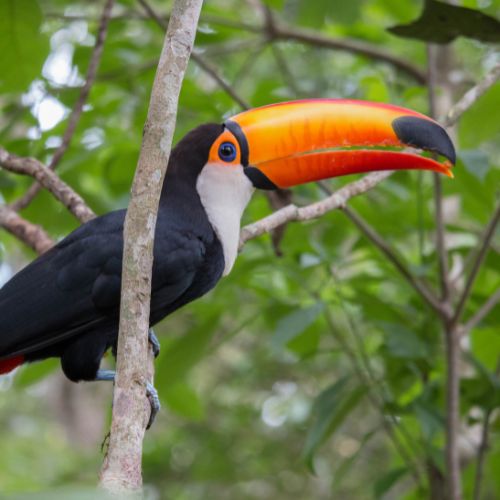Machu Picchu is not only an archaeological wonder, but also a natural sanctuary that is home to a great diversity of animal species. Its location makes it part of one of the richest ecosystems in Peru.
In Machu Picchu, it is possible to observe llamas grazing among the ruins, brightly colored butterflies, exotic birds like the Andean cock-of-the-rock, and animals such as the vizcacha or the spectacled bear. With more than 400 species of birds, dozens of mammals, and an incredible variety of insects and reptiles, Machu Picchu offers a unique natural experience that complements its historical and cultural value.
Machu Picchu is also a natural sanctuary that houses a great variety of animals due to its location between the Andes and the high jungle. Some of the most common animals that can be seen in the area are:
They are the most visible animals in the citadel. They roam freely through the terraces and meadows. The llama is a domesticated mammal native to the Andes, bred for thousands of years by pre-Inca civilizations.
Size: approximately 1.6 m tall; weight: between 120 and 150 kg; fur: long and soft, in various colors (white, brown, black, spotted). They are ruminants and have no hooves, but soft pads that do not damage the archaeological ground. It was a pack animal for the Incas, capable of carrying up to 30 kg. Its wool was used to make textiles, and its manure served as fertilizer. The llama also had symbolic and ritual value, being represented in ceramics and offerings.
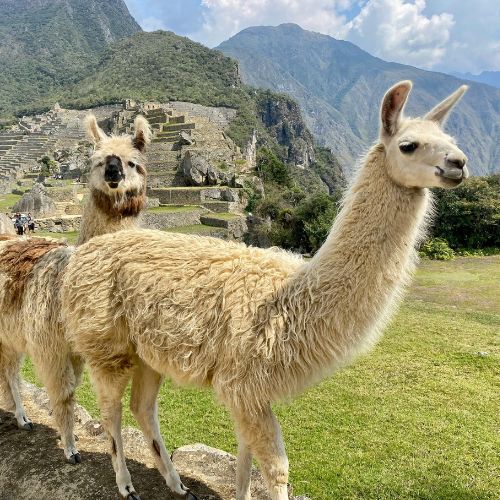
The vizcacha is an Andean rodent that looks like a mix between a rabbit and a squirrel. It is very agile and often hides among stones or rocky structures. In Machu Picchu, it lives discreetly among the Inca walls and can be seen sunbathing or jumping between rocks.
The vizcacha is approximately 30 to 45 cm long, plus a long, furry tail. It can weigh between 1.5 and 3 kg. Its fur is dense and soft, grayish or brown in color, ideal for the Andean climate. The vizcacha has a tail similar to a squirrel's.
Vizcachas are herbivores, feeding on grass, leaves, mosses, and bark. They are very fast and can perform long, agile jumps. They are not domesticated and have no direct relationship with human life like llamas, but are an important part of the sanctuary’s natural balance. Keep in mind that vizcachas are protected and should not be touched or fed.
In Machu Picchu, they often appear near ancient walls, sunny areas, or rocky zones. You can see them especially in the mornings or late afternoons.
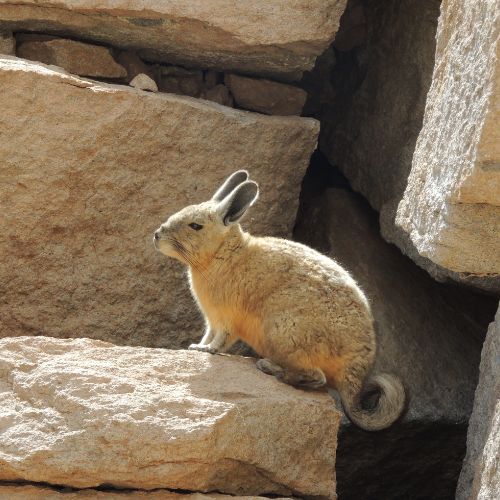
The Andean cock-of-the-rock is one of the most striking birds in South America due to its bright plumage and courtship behavior. It inhabits humid forests, including the surroundings of Machu Picchu. Although it is hard to spot due to its shy behavior, it is one of the most sought-after animals by birdwatchers. This bird measures between 30 and 35 cm and weighs around 200 to 250 g.
The male’s coloration is bright orange-red with black wings and a very visible semicircular crest, while the female is duller reddish-brown with a less developed crest. Thus, the male is much more eye-catching than the female. These birds are frugivores and mainly feed on wild fruits.
A curious fact is that males perform a courtship show called a lek, where several males dance and compete for the attention of females; however, they are solitary birds outside the mating season.
They can be found in forested areas around the sanctuary, especially on less traveled routes like the Inca Trail, the Mandor route, or Aguas Calientes areas. They are difficult to spot, but some guides can help you find them during times of low tourist flow.
They are not endangered, but their habitat is threatened by deforestation. This bird is protected within natural areas like the Historic Sanctuary of Machu Picchu. It is considered a flagship species for ecotourism and conservation in Peru.
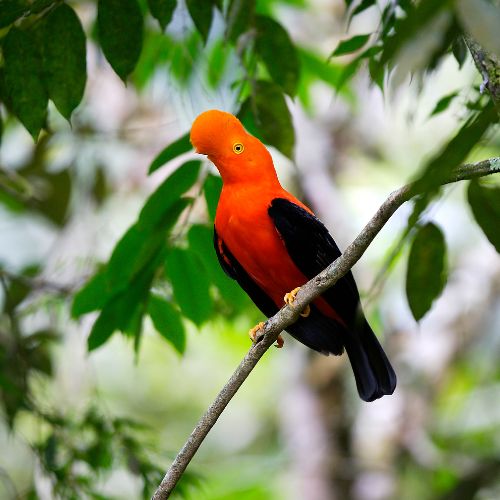
Hummingbirds are tiny and fast birds, known for their ability to fly in all directions and their nectar-based diet. Machu Picchu, being located between the high jungle and the Andes, is home to a great diversity of hummingbirds, many of them endemic to Peru.
The size of these birds ranges from 7 to 15 cm depending on the species and they can weigh between 6 to 20 g. They have bright, metallic plumage in colors like green, blue, red, or purple, with a long, thin beak adapted to extract nectar.
Their wings beat extremely fast, up to 80 times per second, and they have a very fast metabolism, requiring constant feeding. They feed on flower nectar, but also small insects for protein. These birds are territorial, especially when they find a good nectar source, and can visit up to 2,000 flowers per day, which helps pollinate native plants.
Some of the species you can observe in the area include the Giant hummingbird, emerald star, ruby-throated hummingbird, violet hummingbird, and golden-bellied comet. These hummingbirds can be seen on ecological routes like the Mandor Gardens, around Aguas Calientes, or along the Inca Trail.
Despite their tiny size, hummingbirds can fly up to 80 km per day. They also enter a nighttime “torpor” state to conserve energy.
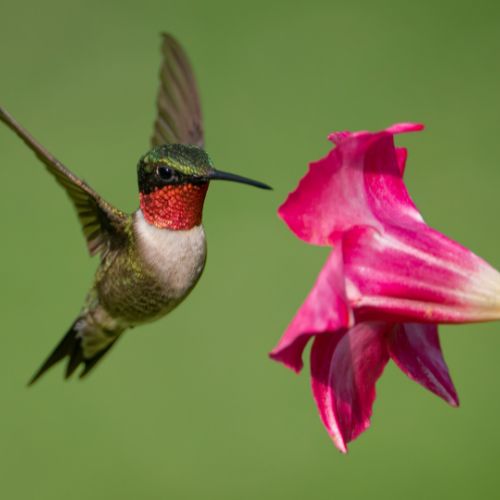
Machu Picchu is home to a wide variety of brightly colored butterflies with unique patterns, many of which are found only in this region of the world. It is estimated that there are more than 300 species of butterflies in the area.
The size of butterflies ranges from 2 cm (small) to over 15 cm in wingspan, with intense and varied colors (blue, yellow, orange, black, transparent, iridescent). Some species have transparent or camouflaged wings, making them hard to detect.
They feed mainly on the nectar of wildflowers, fermented fruits, sap, or even minerals from the moist soil. Butterflies are more active during sunny and humid days, especially in the mornings. This species contributes to the pollination of native plants.
Among the best places to observe butterflies are the Mandor Gardens, Inca Trail, around Aguas Calientes, and the Machu Picchu Butterfly Sanctuary.
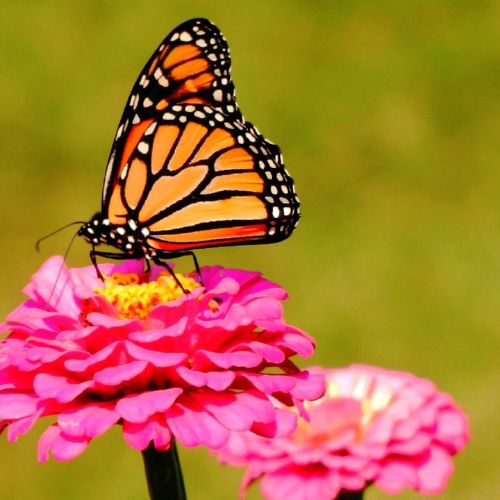
The spectacled bear is the only native bear of South America and an endangered species. It is a solitary, shy mammal that is hard to spot, but inhabits the humid forests surrounding Machu Picchu. It gets its name from the light markings around its eyes that resemble eyeglasses. These markings are unique to each individual, like a fingerprint.
It can measure between 1.3 and 2 meters in length and weigh between 80 and 140 kg, although males can be heavier. The spectacled bear has black or dark brown fur, with white or yellowish spots on the face, neck, and chest.
A curious fact about the spectacled bear is that it has an excellent sense of smell and, despite its weight, can climb trees to feed or rest.
They feed mainly on fruits, bromeliads, orchids, leaves, roots, and occasionally small animals. The spectacled bear is threatened by deforestation, illegal hunting, and agricultural expansion. It is protected within the Historic Sanctuary of Machu Picchu, the Manu Biosphere Reserve, and other natural areas in Peru. It is very difficult to see it directly in the citadel, but it inhabits forested areas such as: the Inca Trail, the sanctuary forests, and the surroundings of Mandor and Putucusi.
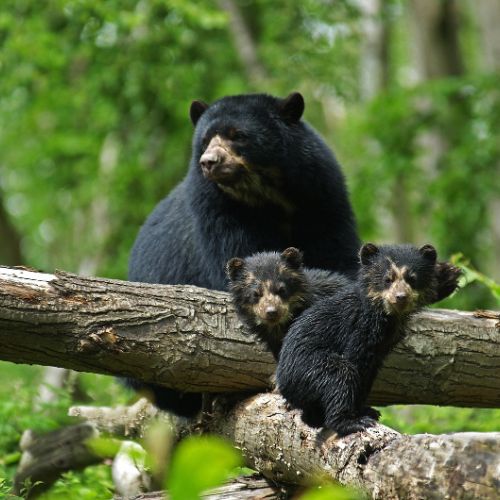
More than 420 species have been recorded, many of them endemic and exotic.
